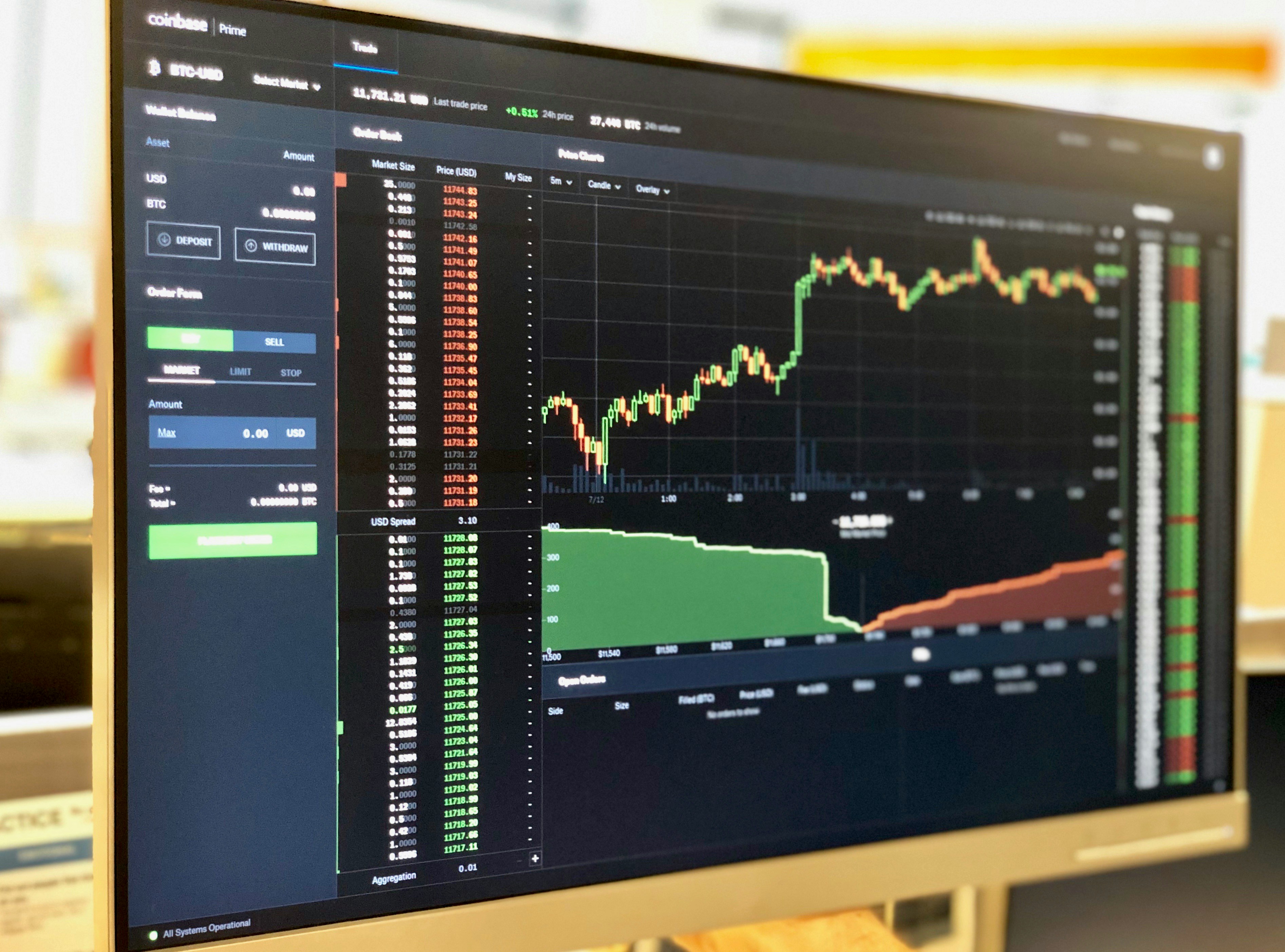
Introduction to Bitcoin Price Prediction
Bitcoin price prediction is a critical aspect of cryptocurrency analysis, particularly for investors looking to navigate the volatile market. Given the increasing popularity of Bitcoin as a digital asset, understanding how to forecast its price movements has become essential. Investors often rely on price predictions to make informed decisions, aiming to maximize their returns or minimize their losses. The ability to anticipate potential market shifts can greatly influence trading strategies and overall investment success.
Several factors contribute to the fluctuations in Bitcoin’s market value. Firstly, investor sentiment plays a significant role; positive news can lead to increased demand and higher prices, whereas negative sentiment can cause declines. Additionally, macroeconomic factors, including interest rates, inflation, and global economic stability, impact Bitcoin’s appeal as a store of value and medium of exchange. Regulatory developments also serve as significant influencers, with governments around the world grappling with how to approach cryptocurrency regulation, which can either bolster or hinder market confidence.
The time frame of our analysis focuses on April 8, 2025, a date that is analyzed through the lens of trends and patterns observed in the cryptocurrency sphere. Historical analyses of Bitcoin price movements, alongside advancements in blockchain technology and increasing institutional adoption, could provide additional contexts for understanding potential price shifts. Thus, our examination will identify both short-term and long-term indicators that could shape Bitcoin’s trajectory around this date. In essence, the objective is to offer a comprehensive overview of factors that could play a pivotal role in determining Bitcoin’s market value as we approach this critical date.
Current State of the Bitcoin Market
As of October 2023, the Bitcoin market has experienced a series of fluctuations that have caught the attention of both investors and analysts. The price of Bitcoin fluctuated significantly throughout the year, reflecting broader shifts in market sentiment and macroeconomic factors. Currently, the price of Bitcoin hovers around $46,000, a figure that represents a substantial increase from its performance earlier in the year. This upward trajectory can be attributed to various institutional investments and a growing acceptance of cryptocurrency as a viable asset class.
Market capitalization for Bitcoin stands at approximately $850 billion, making it the leading cryptocurrency by market cap. It constitutes a significant portion of the total cryptocurrency market, which has also seen a growing number of participants. Trading volumes have intensified, with daily volumes reaching over $20 billion on average, signaling increased interest from retail and institutional investors alike. Such metrics indicate that the market is currently buoyed by renewed enthusiasm and a more favorable regulatory environment in several key regions, which may play a significant role in the future price movements of Bitcoin.
Historically, several key price levels have emerged as critical benchmarks. For instance, the $30,000 level served as a strong support zone earlier this year, while the $50,000 resistance has proved challenging to surpass in recent months. Additionally, noteworthy events such as regulatory developments, market adoption, and macroeconomic changes have historically influenced Bitcoin price trends. Analysts often point out how these milestones could set the stage for the coming years, particularly leading up to April 2025. Understanding these dynamics is essential for anyone interested in Bitcoin price prediction, as they can inform strategies and expectations moving forward.
Fundamental Analysis of Bitcoin
The fundamental analysis of Bitcoin entails examining the various elements that influence its value. Key aspects such as supply and demand dynamics greatly impact the bitcoin price prediction. The total supply of Bitcoin is capped at 21 million coins, creating scarcity. As more investors and institutions adopt Bitcoin, the demand increases, which can push the price upward. Understanding this relationship is crucial; when demand outpaces supply, significant price surges can occur.
Another critical factor that influences Bitcoin’s price is the adoption rate. The growing acceptance of Bitcoin as a payment method among merchants, as well as increased usage among retail and institutional investors, enhances its value. This trend is further supported by developments in blockchain technology and the expansion of decentralized finance (DeFi) platforms. As awareness and acceptance of Bitcoin rise, future price projections can be positively influenced.
Regulatory developments also play a significant role in shaping Bitcoin’s market. Governments worldwide are still determining how to regulate cryptocurrencies, and their decisions can create significant volatility in the market. For instance, favorable regulations may lead to increased investment, while stringent regulations may cause investors to withdraw. Therefore, monitoring regulatory announcements is essential for understanding potential impacts on Bitcoin’s price.
Finally, macroeconomic influences, such as inflation and currency fluctuations, are important to consider in a comprehensive analysis of Bitcoin. As traditional fiat currencies face devaluation, individuals often turn to Bitcoin as a hedge against inflation. This perception further solidifies Bitcoin’s role as “digital gold,” leading to a bullish sentiment and affecting the bitcoin price prediction. By examining these fundamental factors, investors can gain valuable insights into the potential movements of Bitcoin’s value in the coming months.
Technical Analysis: Tools and Indicators-Bitcoin Price Prediction and Analysis for April 8, 2025
Technical analysis is an essential approach for forecasting Bitcoin price movements, especially as we look towards April 8, 2025. This methodology relies on historical price data and trading volumes to make informed predictions about future price fluctuations. Among the most utilized tools in this field are chart patterns, moving averages, and various indicators that provide insights into market trends.
Chart patterns play a vital role in technical analysis as they can signal potential price reversals or continuations. Patterns such as head and shoulders, double tops or bottoms, and triangles are instrumental in forecasting Bitcoin’s volatility and likely future price points. Identifying these patterns requires keen observation and experience, allowing traders to make educated decisions about entering or exiting positions based on the anticipated direction of Bitcoin’s trajectory.
Moving averages, another key component, are used to smooth out price data to create a trend-following indicator. The two most common types are the simple moving average (SMA) and the exponential moving average (EMA). By analyzing these moving averages, traders can identify the trend direction and potential support or resistance levels, which are crucial for making an accurate Bitcoin price prediction. For instance, a crossover of the 50-day and 200-day moving averages can indicate a change in market sentiment, prompting investors to adjust their strategies accordingly.
Moreover, analyzing trading volumes is critical for confirming trends identified by chart patterns and moving averages. An increase in trading volume often signals strong investor conviction, affirming the reliability of the price movements observed. As the date of April 8, 2025 approaches, employing these technical analysis tools will enhance the accuracy of Bitcoin price predictions, enabling traders and investors to make more informed decisions in a highly volatile market.
Market Sentiment and Influencing Factors
The role of market sentiment in Bitcoin price prediction cannot be underestimated, as it significantly influences investor behaviors and market movements. In recent years, social media platforms have emerged as powerful tools for gauging public sentiment regarding Bitcoin. For instance, trending topics, viral posts, and influential figures in the crypto realm can lead to dramatic price fluctuations. A positive tweet from a key industry leader might incite optimism, while negative news coverage can foster fear, pushing potential investors away from buying Bitcoin. Such trends indicate the importance of monitoring social media to anticipate potential shifts in Bitcoin’s trajectory.
Moreover, the use of sentiment indices—tools that aggregate investor emotions reflected in trading activities—further enrich the analysis of Bitcoin’s price dynamics. Data from these sentiment indicators can offer crucial insights into whether a significant portion of the market feels bullish or bearish, thus providing a predictive edge in understanding Bitcoin’s potential movements leading up to April 2025. High levels of optimism often correlate with increased buying activity, whereas a pessimistic outlook may result in panic selling.
In addition to external factors, psychological elements play a critical role in Bitcoin trading. Investors may often fall prey to cognitive biases, such as herd mentality, which can lead them to buy or sell based on the behavior of others rather than on sound analysis. As Bitcoin approaches crucial price levels, these psychological factors can become pronounced, affecting how traders react and adjust their portfolios. Ultimately, a comprehensive approach to Bitcoin price prediction must include a thorough analysis of both emotional and rational investor behavior—one that encompasses social media trends, sentiment indices, and psychological forces as they continually shape the Bitcoin landscape as we move towards April 2025.
Expert Predictions and Forecasts
As we approach April 8, 2025, the cryptocurrency market remains a focal point for both investors and analysts alike. Experts from diverse backgrounds provide insights into what the future may hold for Bitcoin, the leading cryptocurrency by market capitalization. Their predictions are invaluable for understanding potential price movements. While sentiments vary widely, two predominant views emerge: bullish and bearish predictions.
On the bullish side, many analysts project a positive trajectory for Bitcoin price prediction, citing factors such as increasing adoption by institutional investors, the potential for regulatory clarity, and widespread recognition of digital currencies as legitimate assets. For instance, prominent investment firms have noted the growing trend of incorporating Bitcoin into corporate treasuries, which may elevate demand. Some expert predictions indicate that Bitcoin could potentially reach new all-time highs by the target date, buoyed by factors like global economic recovery and escalating inflation rates.
Conversely, a number of experts advise caution, presenting bearish forecasts. Some analysts express concern over regulatory scrutiny, particularly as governments worldwide are beginning to tighten policies surrounding cryptocurrencies. Such measures could create volatility and suppress Bitcoin’s price movement. Additionally, the possibility of a significant market correction is a real consideration, particularly if speculative frenzy leads to overvaluation. These bearish sentiments are illuminated in various reports, with predictions that Bitcoin may find itself trading at lower levels than anticipated by April 2025.
Given the conflicting opinions among cryptocurrency experts, it is critical for investors to remain informed and cautious. Whether one leans towards a bullish or bearish perspective, understanding the nuances in expert predictions can equip investors with the necessary insights for navigating the complexities of Bitcoin price prediction. By analyzing diverse viewpoints and incorporating them into decision-making strategies, stakeholders can better position themselves in this ever-evolving market.
Risks and Uncertainties in Bitcoin Prediction
The endeavor of predicting Bitcoin’s price, particularly for a specific date such as April 8, 2025, is fraught with risks and uncertainties. One of the foremost challenges arises from the inherent volatility of the cryptocurrency market. Prices can fluctuate dramatically within short periods, driven by factors including investor sentiment, market trends, and macroeconomic indicators. This volatility complicates the task of making accurate Bitcoin price predictions, as historical trends may not reliably inform future performance.
Technological changes also pose significant risks. Bitcoin operates on an evolving platform that is subject to frequent updates and innovations. Developments in blockchain technology, implementation of new features, or the introduction of alternative cryptocurrencies can drastically alter the landscape in which Bitcoin operates. Such technological advancements could lead to increased competition or even a reevaluation of Bitcoin’s utility, thereby impacting its price significantly.
Regulatory impacts further contribute to the uncertainty surrounding Bitcoin price predictions. Different countries and regulatory bodies are continuously revising their stances on cryptocurrencies, which can lead to sudden market shifts. Stricter regulations or outright bans in certain jurisdictions can instill fear among investors, while favorable regulations could drive prices up. This regulatory landscape is constantly changing, making it difficult to predict how external factors will influence Bitcoin in the long term.
Given these complexities, it is essential for investors and analysts alike to approach Bitcoin price predictions with caution. A thorough understanding of market dynamics, along with a careful analysis of technological and regulatory developments, is critical before making any predictions for specific dates. Awareness of these risks can help prospective investors make informed decisions, minimizing potential pitfalls as they navigate the evolving terrain of cryptocurrency investments.
Potential Scenarios for Bitcoin Price on April 8, 2025
As we analyze the future trajectories of Bitcoin, particularly for April 8, 2025, it is essential to consider a range of potential scenarios that could unfold, influenced by various market dynamics. Understanding these outcomes can help investors position themselves strategically in an ever-evolving digital landscape.
In an optimistic scenario, the bullish sentiment can drive the Bitcoin price to new heights, potentially surpassing the historical resistance levels. Factors contributing to this upward momentum may include increased institutional adoption, the launch of Bitcoin ETFs, and favorable regulatory developments. Should such conditions prevail, predictions suggest that Bitcoin could reach prices upwards of $100,000, solidifying its position as a leading digital asset within the cryptocurrency market.
Conversely, a pessimistic view may materialize if the market is affected by significant regulatory crackdowns, technological flaws, or a severe global economic downturn. In this circumstance, investors could witness Bitcoin’s price decline due to diminished trust among retail and institutional investors. Prices might retrace back to the $20,000 mark, echoing the sentiments seen in past market corrections, reflecting a high degree of market volatility and uncertainty.
A moderate scenario encompasses a balanced view, factoring in both bullish and bearish opportunities. Bitcoin could stabilize around the $50,000 to $70,000 range, as the market absorbs various external influences, such as economic trends and changes in investor sentiment. This scenario highlights a potential maturation of the cryptocurrency market, where Bitcoin becomes less susceptible to extreme fluctuations while still providing solid returns for investors.
Ultimately, these potential scenarios underscore the complex nature of the Bitcoin price prediction landscape. Investors should remain informed and prepared for various outcomes as they navigate their investment strategies leading up to April 8, 2025.
Conclusion and Final Thoughts
In this blog post, we have delved into various aspects of the current bitcoin price prediction and the analytical approaches utilized to assess its potential trajectory leading up to April 8, 2025. Throughout our exploration, we have considered historical trends, market sentiment, and notable technological developments surrounding Bitcoin. These elements play a critical role in forming a comprehensive outlook on the cryptocurrency’s future value.
The analysis reveals that while there are numerous factors that can influence the movement of Bitcoin’s price, maintaining a balanced and informed perspective is crucial for investors. The cryptocurrency market, characterized by its volatility and unpredictability, requires a strategic approach to investment. Understanding the underlying variables—such as regulatory changes, macroeconomic indicators, and adoption rates—enables investors to make more informed decisions.
Furthermore, it is essential to recognize that predictions regarding bitcoin prices are inherently uncertain. As we have discussed, various predictive models offer distinct insights, but the rapidly evolving nature of the market can lead to unexpected price movements. This dynamic landscape underscores the importance of flexibility in investment strategies, as what holds true today may vastly differ tomorrow.
In summary, as we head towards April 2025, investors should remain vigilant and stay updated with emerging trends and data that may impact Bitcoin’s price. The cryptocurrency market presents both risks and opportunities; thus, employing fundamental analysis while remaining skeptical of overly optimistic predictions is advisable. By balancing caution with creativity in investment approaches, one can navigate the complexities of the bitcoin market effectively.
Bitcoin Price Prediction for April 2025: Expert Analysis, Trends & Key Events





















